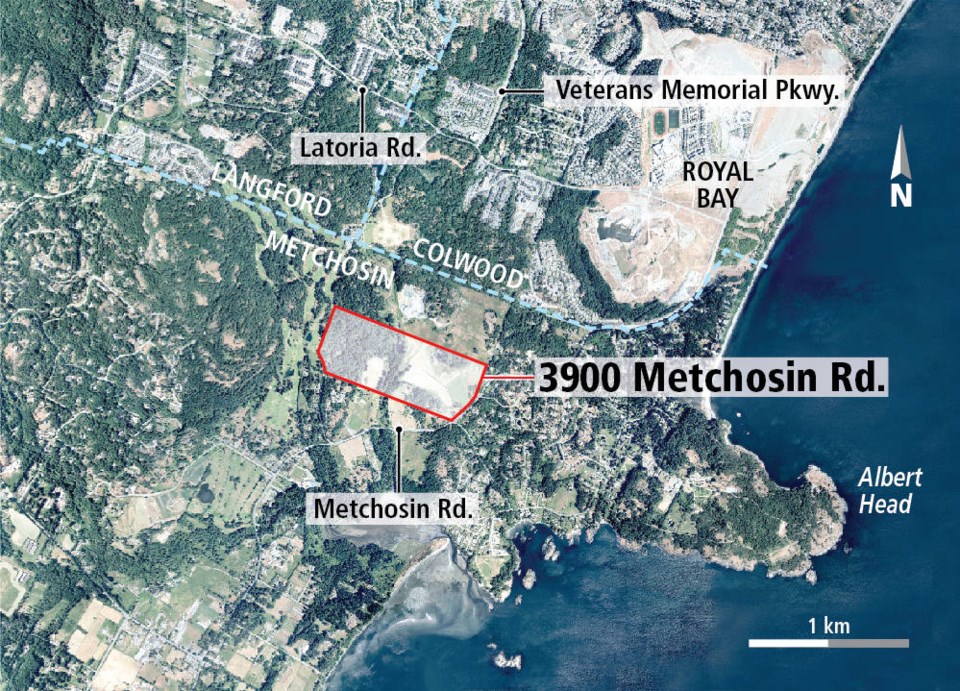A commentary by the president of the Association for the Protection of Rural Metchosin (APRM).
In his recent commentary, Wayne Jensen notes the serious issues facing youth and families in the region and the difficult social environment in which the local Boys and Girls Club now operates. He connects these challenges to why the club feels it needs to subdivide and sell 40 acres of its Metchosin property.
As someone who spent a large part of his youth living next to a Boys and Girls Club in a low-income housing complex in Calgary, I know these challenges firsthand. Youth in my neighbourhood faced layers of issues (abuse, substances, learning issues, mental health). The club helped many of us work ourselves out of those issues.
Much of that help came from the club’s outdoor programs, which transported us, physically and mentally, from our confined urban and social settings.
Exposure to the natural environment enabled kids like me to discover hidden strengths and personal value. Hiking and camping trips connected us in positive ways with peers and club leaders, while disconnecting us from unhealthy social pressures and spaces.
This experience is a big reason why I’m speaking out against the club’s move to subdivide a 40-acre natural space at its Metchosin property. I know how transformative such natural spaces can be for youth.
This parcel of land is an irreplaceable resource for the Capital Regional District, particularly among the West Shore communities, which are seeing explosive growth.
That term — explosive — is used intentionally, as rocky slopes are blasted flat and forests cut for more residential and commercial development.
Just down the road from the club’s Metchosin property lies the Royal Bay development in Colwood, which will add thousands of new residential units in the coming years.
More than 1,000 students attend Royal Bay Secondary. Considering those students, the value of outdoor experience and the rapid loss of natural space on the West Shore, the club’s decision to subdivide that land is staggeringly short-sighted.
Jensen states that the club “discussed our intent openly with the mayor and council in September.” I was at that council meeting and no one from the club was in attendance; there were no such “open” discussions.
The matter was raised briefly at a council meeting in October, ironically when the club’s executive director was present to receive the annual property tax exemption.
However, the matter was raised only in a passing question by a councillor. The club’s representative responded with memorable brevity and it was the first public mention of the subdivision.
The club put out a news release on the subdivision in January. This only came after the APRM and others raised the matter with local media. Communicating with key stakeholders by way of a news release is not in the best-practice handbook of community relations.
The club’s avoidance of real discussion about this property marks a big change from the past.
After its 2004 purchase, the club made significant efforts to involve the community, including a multi-stakeholder visioning process.
Metchosin residents were among the many donors who responded to fundraising appeals, enabling the land to be paid off in just a few years.
Club representatives explicitly re-emphasized intentions regarding environmental stewardship in a 2007 rezoning application. That “long-term” vision must surely have been on the mind of every Metchosin mayor and councillor every year they granted the club tax-exemptions — more than $217,000 over 17 years.
Back then, the club was a genuine community builder, committed to youth and to protecting the local environment. That sense was affirmed in statements like this: “Boys and Girls Clubs also understands the importance of the 98-acres of green space to the residents of Metchosin and, indeed, we have identified the property’s rural environment as its key asset. It is our desire to maintain the property’s ‘natural’ environment, thereby allowing for re-creation from urban life, for all future users.” (2004, club news release).
What is the APRM seeking? Simply the opportunity to engage in genuine dialogue about the future of that land. We ask that the club pause the subdivision application and come to the table.
Perhaps the club is facing challenges and pressures, but we struggle to understand how selling assets can be a sustainable model for funding new programs; it’s like burning the furniture to heat the house.
We believe the best way to address those pressures is to involve the important community partners you have in the region: municipalities, the Ministry of Children and Family Services (which provided $2.98 million in funding last year), other youth service providers, and local groups like the APRM and Metchosin Foundation.
How ironic it is to be responding to the club like this, when my appreciation for the value of outdoor experience came in large part from the club when I was a kid. I urge the Boys and Girls Club of Greater Victoria to work with us to find a way of sustaining those programs for youth today and in the future.



